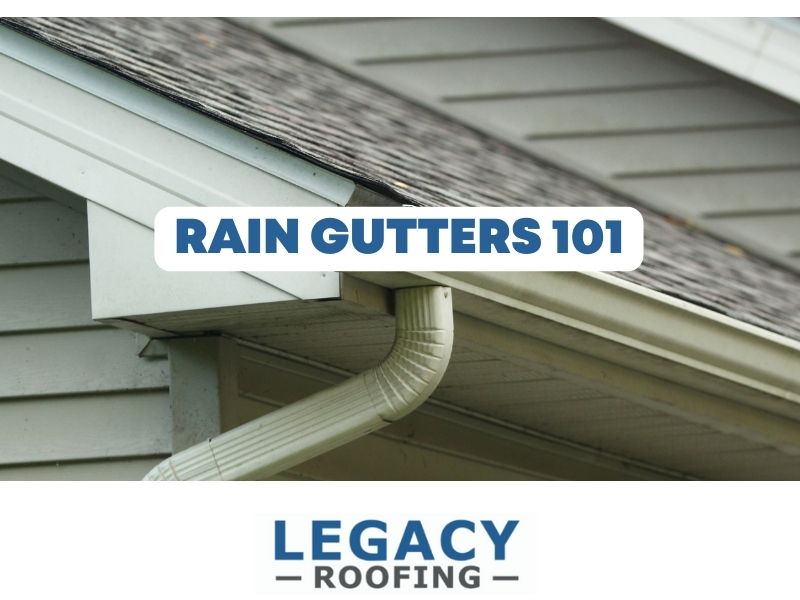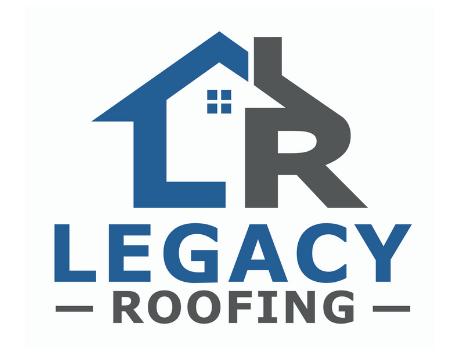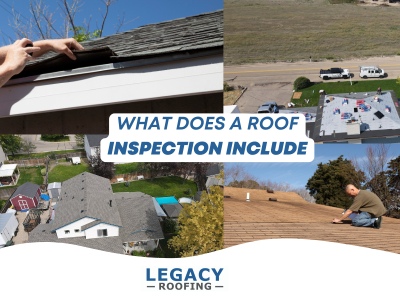What does a roof inspection include? When you suspect roof damage and need a roof inspection near me, we are here to help if you live in Boise or nearby!
Skipping a roof inspection may feel like saving money, but it’s really gambling with your home insurance. Think of it like ignoring a doctor’s checkup; you won’t notice the problem until it’s too late. Even a flat roof hides weaknesses that only a skilled roofer can uncover. From accessibility concerns to hidden leaks, the stakes are higher than you think.
Want to know what a roof inspection really covers and why it could save you thousands? Read on before your roof becomes the headline of your next renovation bill. Here is what professional roofing contractors (like us) will see when we inspect a roof!
What is a Roof Inspection? 7 Things We Look For:
1. Missing or Damaged Roof Shingles Aren’t Just Cosmetic
A cracked shingle may look harmless, but it’s the first domino in a chain of expensive problems. Once that layer is gone, water finds its way under the surface, rotting the underlayment and staining ceilings below. Homeowners often think it’s “just one piece,” but that one piece can cost thousands when ignored.
During an inspection, pros aren’t just glancing at color fade or curled edges, they’re spotting patterns. A few shingles out of place might hint at poor installation, aging adhesives, or storm stress waiting to repeat itself across the roof. Inspections catch these clues early, before your living room doubles as a rain collector.
Why it matters:
- Water doesn’t stay where you expect—it travels.
- Small gaps expand with every hot summer and cold winter.
- Repairs are affordable early, brutal when delayed.
The moral? What looks cosmetic is actually your roof’s version of a flashing warning light. Ignore it, and that tiny blemish becomes an open invitation for leaks, rot, and premature replacement.
2. Flashing Failures Around Chimneys and Skylights
Think of flashing as the referee on your roof—quietly keeping order where different surfaces collide. Around chimneys, skylights, and vents, it’s the slim strip of metal that directs water away from trouble. When it bends, rusts, or pulls loose, the game changes fast: leaks show up in walls, ceilings, and sometimes even electrical fixtures.
Inspectors pay close attention here because flashing problems rarely scream for attention until damage is already done. A dark water stain above a fireplace or damp drywall near a skylight often traces back to failed flashing. These aren’t surface blemishes—they’re clues of deeper issues that spread silently.
What roof inspectors look for:
- Rust spots or gaps where flashing meets masonry
- Loose nails or bent edges that allow water to creep
- Sealants that have dried, cracked, or washed away
Flashing failures don’t just stay small. Left unchecked, they spread water into places you can’t see until repair costs stack up. Catching them early is the difference between tightening a seal and tearing out half your ceiling.
3. Sagging Gutters and Water Mismanagement

It usually starts with a story like this: you’re sipping coffee by the window during a heavy rain, when you notice the water isn’t flowing down the spout-it’s pouring over the edge like Niagara Falls. That’s not just messy. It’s a sign your gutters are sagging or clogged, and the water meant to be channeled away is now finding its own path straight to your foundation.
Inspectors know sagging gutters are more than a weekend chore. They’re signals that drainage is failing and water is pooling where it shouldn’t. Overflow runs down siding, saturates soil, and seeps into basements. Over time, that little waterfall by the porch turns into cracks in the walls and buckled landscaping.
Red flags inspectors catch early:
- Gutters pulling away from fascia boards
- Rust streaks or peeling paint beneath overflow spots
- Soil erosion lines beneath downspouts
- Debris buildup that creates standing water
When gutters fail, the roof isn’t the only casualty. Driveways, patios, and even basement walls get dragged into the mess. A sagging line overhead tells a much bigger story one where water writes the ending, and it’s never cheap.
4. Interior Stains and Attic Red Flags
Water stains, warped wood, or even a faint musty smell tell them leaks have been at work longer than you realize. The attic and interior are where hidden roof issues finally show their hand.
Professionals know that discoloration isn’t just about water dripping through a roof shingle. It could point to insulation breakdown, ventilation issues, or mold growth spreading quietly. Left unchecked, what starts as faint staining can escalate into a full-blown renovation project involving drywall, joists, and even structural repairs.
Here’s how pros translate attic and interior “clues” into potential risks:
| Sign | What It Suggests | Active leak above the ceiling line |
|---|---|---|
| Brown ceiling spots | Active leak above ceiling line | Signals ongoing water intrusion |
| Musty attic smell | Poor ventilation or hidden mold growth | Impacts health and indoor air quality |
| Warped insulation | Consistent exposure to moisture | Reduces energy efficiency and increases utility cost |
| Sunlight visible through rafters | Gaps or failed roof deck | Compromises energy efficiency and pest resistance |
| Damp joists or beams | Reduces energy efficiency and increases utility costs | Weakens roof support and requires urgent repair |
An inspection in these spaces often reveals the problems homeowners least expect—the ones insurance adjusters notice first and contractors know cost the most to fix.
5. Granule Loss and Roof Surface Wear
Step onto a roof after a storm, and a trained inspector immediately notices what most homeowners miss—the roof surface has aged a few years in a single night. The small granules that coat asphalt shingles aren’t just cosmetic; they’re the armor. Once they start shedding, the roof is vulnerable to water intrusion, UV damage, and faster overall decline.
Inspectors know where to look: valleys where water flows hardest, areas beneath overhanging trees, and spots where wind tears at edges. Every handful of granules found in a gutter is evidence the roof is thinning. Think of it like bald spots on a tire—ignore them, and failure is only a matter of time.
Common signs of granule loss and surface wear include:
- Smooth, shiny patches on the roof shingles
- Excessive granules are collecting in rain gutters
- Dark streaks or uneven color across the roof planes
- Exposed fiberglass matting beneath the top layer
- Accelerated wear around chimneys, vents, and skylights
Surface wear isn’t always visible from the curb. But once it begins, it spreads quickly, turning what could have been a minor repair into a full roof replacement years earlier than expected. A thorough inspection ensures those bald patches are caught before they become leaks.
6. Flashing Failures Around Chimneys and Skylights
Flashing is supposed to be your roof’s bodyguard—the thin strips of metal that seal off chimneys, skylights, and roof valleys. But when flashing or fascia fails, leaks creep in quietly and often go unnoticed until there’s water staining your ceiling or rotting wood in your attic. Inspectors know these spots are high-risk because flashing is constantly tested by expansion, contraction, and weather extremes.
To keep these weak points from turning into expensive headaches, roofers focus on six key checks and fixes:
6 Tips to Prevent Flashing-Related Leaks
- Inspect sealant annually – Sealant dries, cracks, and peels over time, making routine checks essential.
- Check for corrosion – Metal flashing can rust, especially near chimneys where water pools.
- Look for gaps – Even small separations between flashing and shingles let in water.
- Upgrade with step flashing – Around chimneys, step flashing lasts longer than old tar-based patch jobs.
- Re-seal skylight perimeters – Skylights expand and contract with heat, so fresh sealant is crucial.
- Schedule pro inspections – Roofers catch early warning signs before water damage spreads indoors.
7. Sagging Roof Decks and Structural Concerns

Roof decking is nothing to mess with, and prolonged roof leaks that go unaddressed can cause roof damage.
Here’s a sobering fact: The U.S. National Roofing Contractors Association notes that sagging roof decks are one of the top early signs of structural compromise, often overlooked until it’s too late. What looks like a “slight dip” from the street can actually mean layers of plywood are weakening, trusses are stressed, or water damage is rotting beams from the inside out.
When inspectors evaluate sagging, they’re not just looking at the roofline—they’re reading the entire structural story of the house. A sagging roof deck may point to:
- Trapped moisture is weakening the wood decking
- Snow or debris overload is stressing support beams
- Hidden leaks rotting joists or rafters
- Termite or pest damage is undermining the structure
- Previous poor construction, where undersized lumber was used
Sagging isn’t cosmetic; it’s a warning flare. Left unaddressed, it can compromise everything from insulation to interior ceilings. And unlike missing shingles or clogged gutters, this problem signals deeper, more expensive repairs ahead.
A pro inspection doesn’t just catch the dip—it finds the cause. Addressing it early can mean the difference between a targeted fix and a full structural overhaul.
Final Word on Roof Inspections
A roof inspection in Boise reveals hidden problems like missing shingles, flashing failures, leaks, and sagging gutters before they become costly repairs. Skipping inspections risks insurance headaches and structural damage. Protect your home and budget—schedule a professional FREE roof inspection with our Boise roofing team today.


 Metal Roof Costs in Boise: A Homeowner’s Guide
Metal Roof Costs in Boise: A Homeowner’s Guide